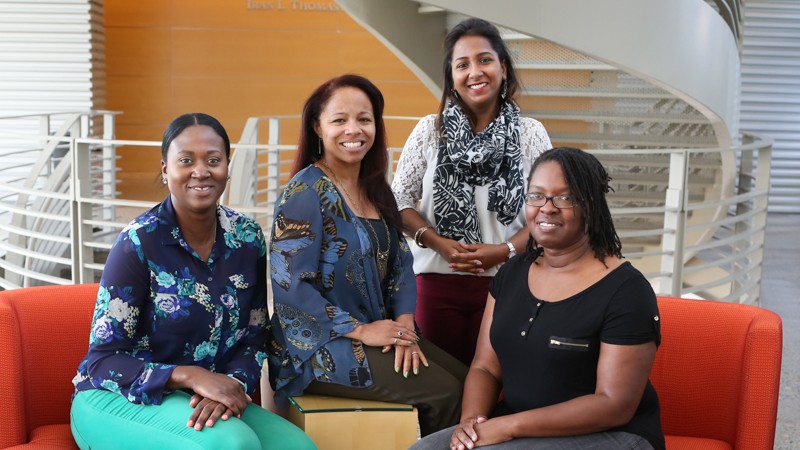Candice Halbert has always excelled in math and science, and she assumed as a child that becoming a doctor was the obvious career choice. She never imagined that she would work to diagnose problems on neutron scattering instruments instead of on people. Now, she wants to encourage young girls to have a better understanding than she did about professional possibilities in scientific fields.
This realization led Halbert to establish an initiative in August 2016 called the Girls in Science, Technology, Engineering, and Mathematics Mentorship Program (gSTEM), a collaborative effort between the US Department of Energy’s Oak Ridge National Laboratory (ORNL) and Vine Middle School that pairs eight adolescent girls with four ORNL mentors for the school year.
“It was just nice to give back to the community and show these students, especially young women of color, that there are people who look like them in STEM professions,” Halbert said. “That’s our mission—to expose young women to STEM education and encourage them to follow their dreams.”
Middle school girls, Halbert said, are at an impressionable age that makes them perfect candidates for STEM mentoring. If at least a few of the mentees go on to have successful high school, college, and professional careers in STEM, Halbert and the program’s other mentors will have achieved their goal.
“If you look at statistics, women are underrepresented in STEM, and women of color even more so,” she said. “If we want to grow these numbers for future generations and add more diversity into the field, we have to start by doing the groundwork.”
The other members of the gSTEM mentoring team are Tara Thompson, Lakeisha Walker, and Neelam Pradhan. Along with Halbert, these women all have worked in the Neutron Sciences Directorate at ORNL. “I really stress to the mentors that this is a team effort,” Halbert said. “gSTEM belongs to all of us.”
Because the students hear lectures in their school classes most days, the bimonthly gSTEM sessions focus on interactive, hands-on experiments ranging from creating “slime” that represents polymers to printing three-dimensional designs. Recently, they programmed and built Lego robots for a competition, a project that helped improve their skills in math and collaborative work.
Before the program began, the students visited ORNL, where they saw the Titan supercomputer, the EVEREST facility, the historic Graphite Reactor, and the Remote System Robotics facility. The tour gave the participants real-world exposure to various STEM initiatives, and the mentors plan to take the students to more areas of the lab in the near future.
For the mentors, gSTEM sessions pose the challenge of explaining complex scientific concepts in an understandable way. “When we do experiments, we have to make them relatable so that the girls can understand what we’re teaching them,” Halbert said. To explain polymers and cross links, for example, Halbert used the analogy of a spider web, telling the students that the longer curved silk fibers represent the polymer, whereas the shorter connecting fibers represent the cross links.
Going forward, Halbert wants to expand gSTEM to Austin-East Magnet High School, where many Vine students attend after completing middle school. That way, former Vine participants can remain engaged by joining the more advanced high school program.
Halbert plans to recruit more mentors, including staff from other directorates across the lab, to help meet the expansion goals. In addition, she would like for the mentors to begin meeting with students weekly instead of twice per month so they can plan more involved, longer experiments.
The mentors strive to empower these students to shatter stereotypes and pursue their goals, as well as build the confidence they need to continue on a STEM career path. “I know that the future will be good for these young ladies,” Halbert said.
UT-Battelle manages ORNL for the DOE Office of Science. The Office of Science is the single largest supporter of basic research in the United States and is working to address some of the most pressing challenges of our time. For more information, please visit http://science.energy.gov/.–By Elizabeth Rosenthal



